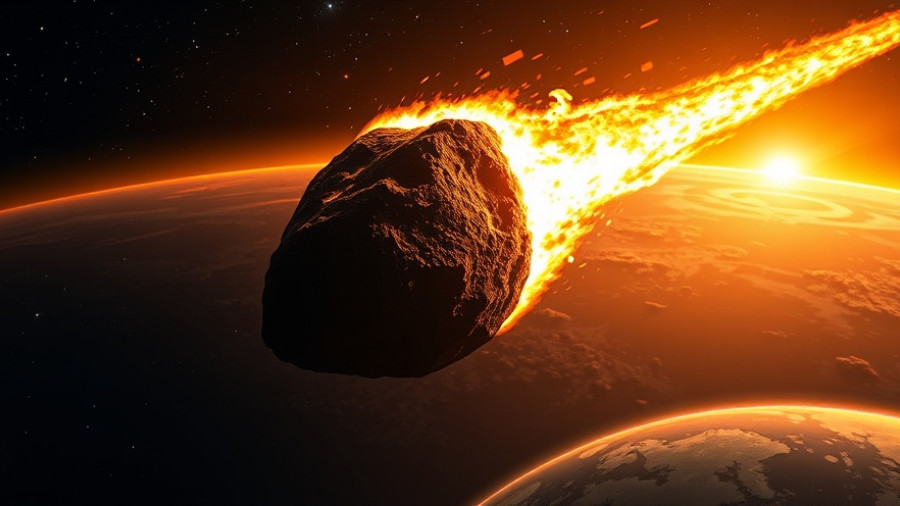
Unveiling a Hidden Chapter of Earth's History
Recent discoveries in South Australia have revealed an astonishing aspect of our planet's tumultuous past. Researchers from Curtin University uncovered unusual tektites—natural glass fragments created by asteroids that struck Earth—believed to be remnants of an impact that occurred about 11 million years ago. This find has become significant, not only for its insight into historical events but also for understanding the risks associated with future asteroid impacts.
The Mystery of the Missing Crater
One of the most intriguing elements of this discovery is the absence of a visible impact crater, which scientists have yet to locate. This raises questions about the scale and nature of the ancient event. Lead author Anna Musolino noted that while these tektites are distinct from known Australasian tektites, the implications of their discovery extend far into our understanding of planetary defense. Finding the source crater could provide critical insights into the asteroid’s trajectory and the resulting geological impact.
What are Tektites?
Tektites are cosmic glass formed when a meteorite collides with Earth, generating heat that melts surface rocks. This process ejects debris into the atmosphere, where it can solidify and scatter over vast areas. The newly identified type of tektite, named ananguites, is exclusive to South Australia and differs chemically from previously known varieties. In contrast to the more recent Australasian tektites, which formed roughly 780,000 years ago, these ancient glass fragments open up a new understanding of Earth’s history and the frequency of large impacts.
The Importance of Understanding Past Impacts
Understanding the history of asteroid impacts is crucial for modern planetary defense strategies. The insights gained from the tektites can inform scientists about the timing and magnitude of past strikes, which can help assess the risks associated with potential future impacts. As we proceed into an era of heightened awareness about near-Earth objects, this research sheds light on the power of historical events that shaped our planet. Professor Jourdan emphasizes that the implications of locating and studying such impacts are significant for advancing our understanding of celestial threats.
Future Predictions and Ongoing Research
This has sparked interest among researchers eager to locate the elusive crater. The fact that the new strewn field spans an area of approximately 560 miles implies that the crater could be significant in size. The quest to discover this crater embodies humanity's ongoing battle to better predict and prepare for any future encounters with potentially hazardous asteroids.
Broader Implications for Society
Pursuing this line of research holds broader implications for society as awareness about planetary defense grows. As experts continue to investigate this ancient impact, they encourage communities to engage with STEM fields and understand the potential technologies that might protect our planet. Increased funding and public interest in space defense initiatives could lead to innovative solutions and better preparedness for potential extraterrestrial threats.
For individuals living in regions like Dallas, this discovery resonates not just on an astronomical level but also provides daily life benefits. Learning about impacts and how our planet has been shaped helps foster a sense of community and global connectivity. The conversation surrounding such issues can fuel more significant discussions about technology and environmental stewardship, enhancing the local lifestyle and inspiring generations to pursue knowledge and exploration.
For more in-depth knowledge about these exciting developments and their implications for life on Earth, we invite you to explore local science initiatives and engage with community educational programs. Understanding our past can pave the way for a brighter, more secure future.
 Add Element
Add Element  Add Row
Add Row 



Write A Comment